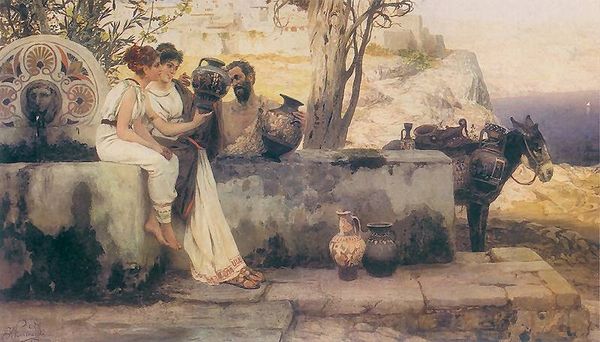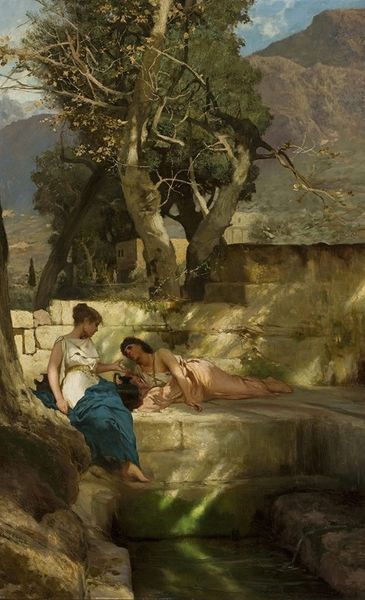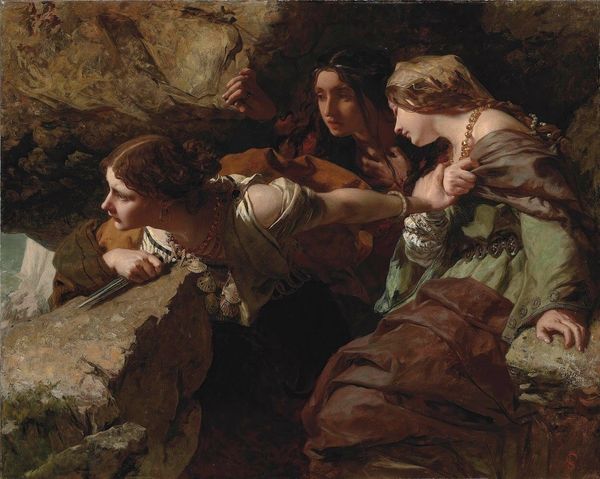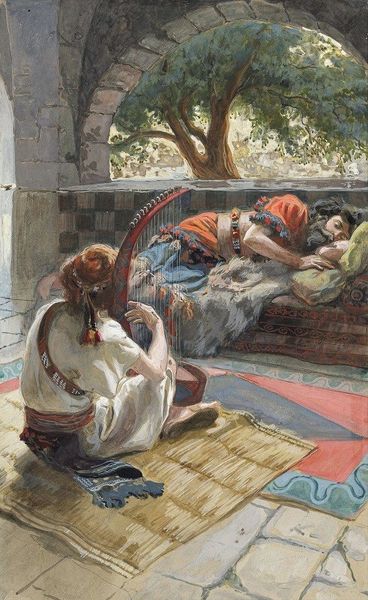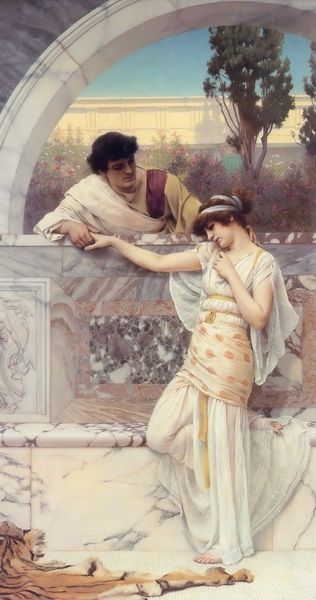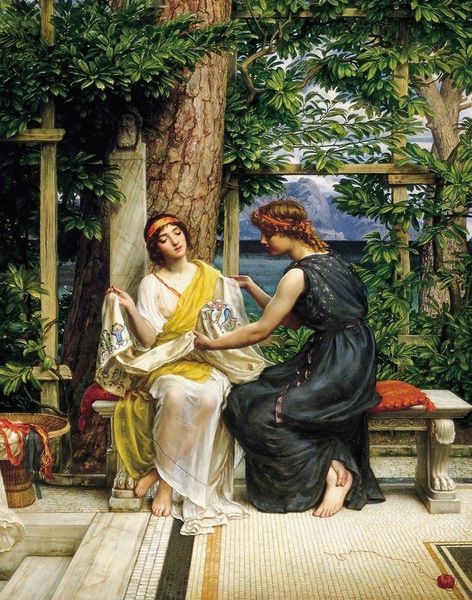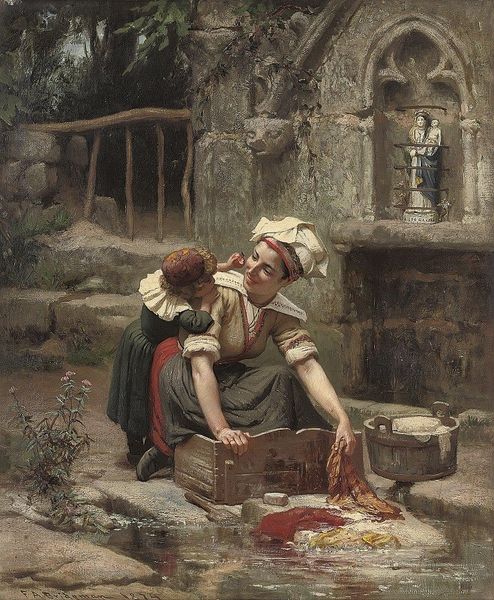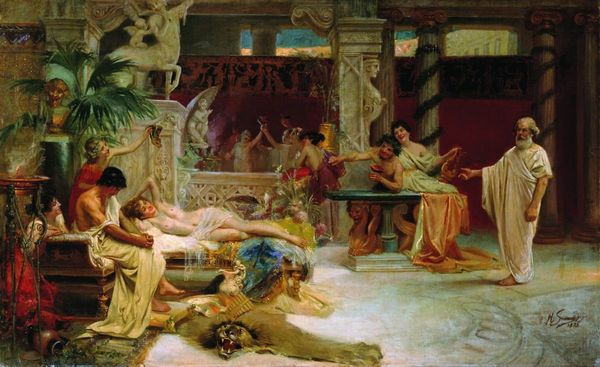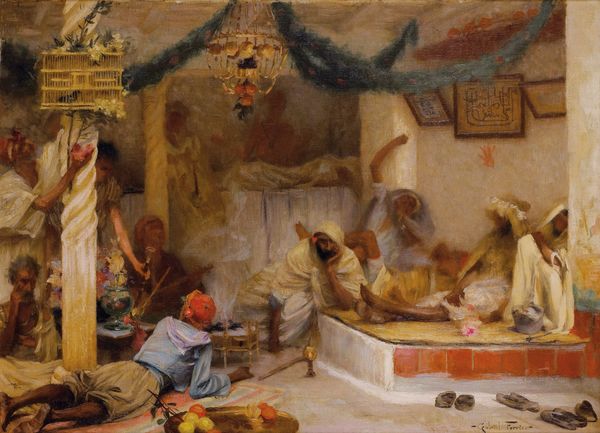
Copyright: Public Domain: Artvee
John William Waterhouse painted "Diogenes" in oil, creating a tableau vivant that invites us to consider its structural oppositions. The composition is immediately divided by the severe geometry of the stone steps, setting up a contrast between the smooth, cool surfaces and the warm flesh tones. The philosopher Diogenes sits in his jar, a picture of earthy materiality, while above him, women draped in flowing robes descend the steps. These women bring with them a palette of light pinks and blues, a stark contrast to the dark browns and tans that envelop Diogenes. This chromatic separation underscores the tension between the philosopher's chosen poverty and the women's apparent wealth. The painting also sets up a series of oppositions: the smooth versus the rough, the cultivated versus the natural, and ultimately, the philosophical versus the societal. Waterhouse is not merely depicting a scene, he is constructing a visual argument about value and existence. This tension ensures that "Diogenes" remains a compelling meditation on choice, value, and the visible structures of society.
Comments
No comments
Be the first to comment and join the conversation on the ultimate creative platform.
